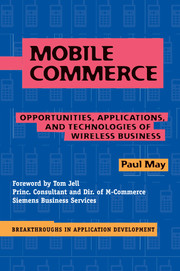Introduction
Published online by Cambridge University Press: 04 August 2010
Summary
Rubber glvs, throwt, take tel off hook. … So began a list found stored in the personal organiser device of a bereaved London man, subsequently convicted in July 2000 of murdering his wife the previous December. The man's care in disguising the murder as a bungled robbery was destroyed by the small matter of the blood on his clothing, and the telltale list – which ended, “ring mobile just befor yo leave”.
Meanwhile, young vacationers partying on the island of Ibiza – the summer centre of the European dance craze–could get free entry to the most popular clubs by responding to text messages received on their cell phones. Almost one quarter of British citizens use text messaging services as a matter of course, and over one third of them have sent a declaration of love via the medium. Lovers of music, books, and clothes purchase items from their cell phones or wireless organisers. Day traders on the beach execute trades with thumb presses, and night birds reserve theatre tickets by pecking at a hand-held screen.
The overorganised killer, the hedonist with an eye for a bargain, the tongue-tied lover: these are all players in a world in which mobile devices are common pieces of equipment, mediating our relationships and creating new ways for people to interact with their friends, employers, and co-workers and with a newly ubiquitous wireless business environment. The world is in everyone's pocket.
- Type
- Chapter
- Information
- Mobile CommerceOpportunities, Applications, and Technologies of Wireless Business, pp. xv - xxPublisher: Cambridge University PressPrint publication year: 2001



